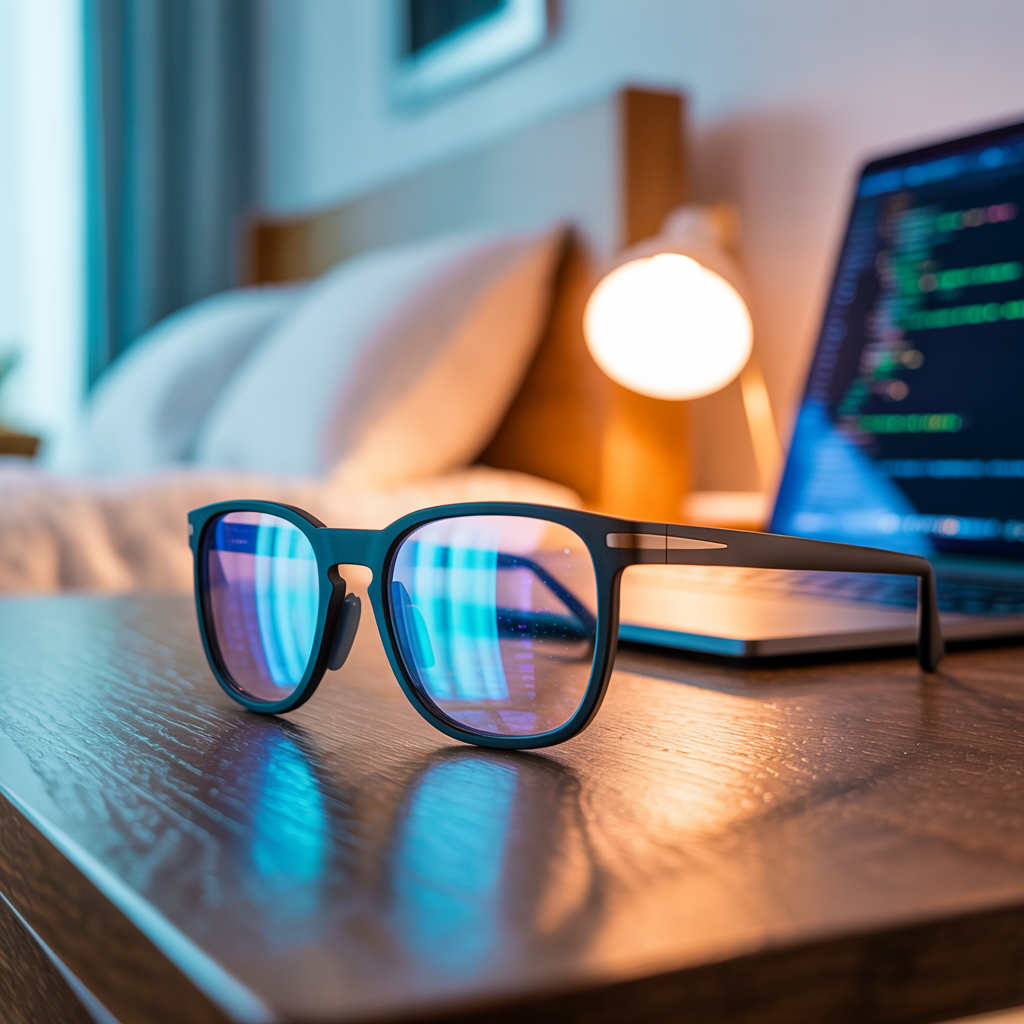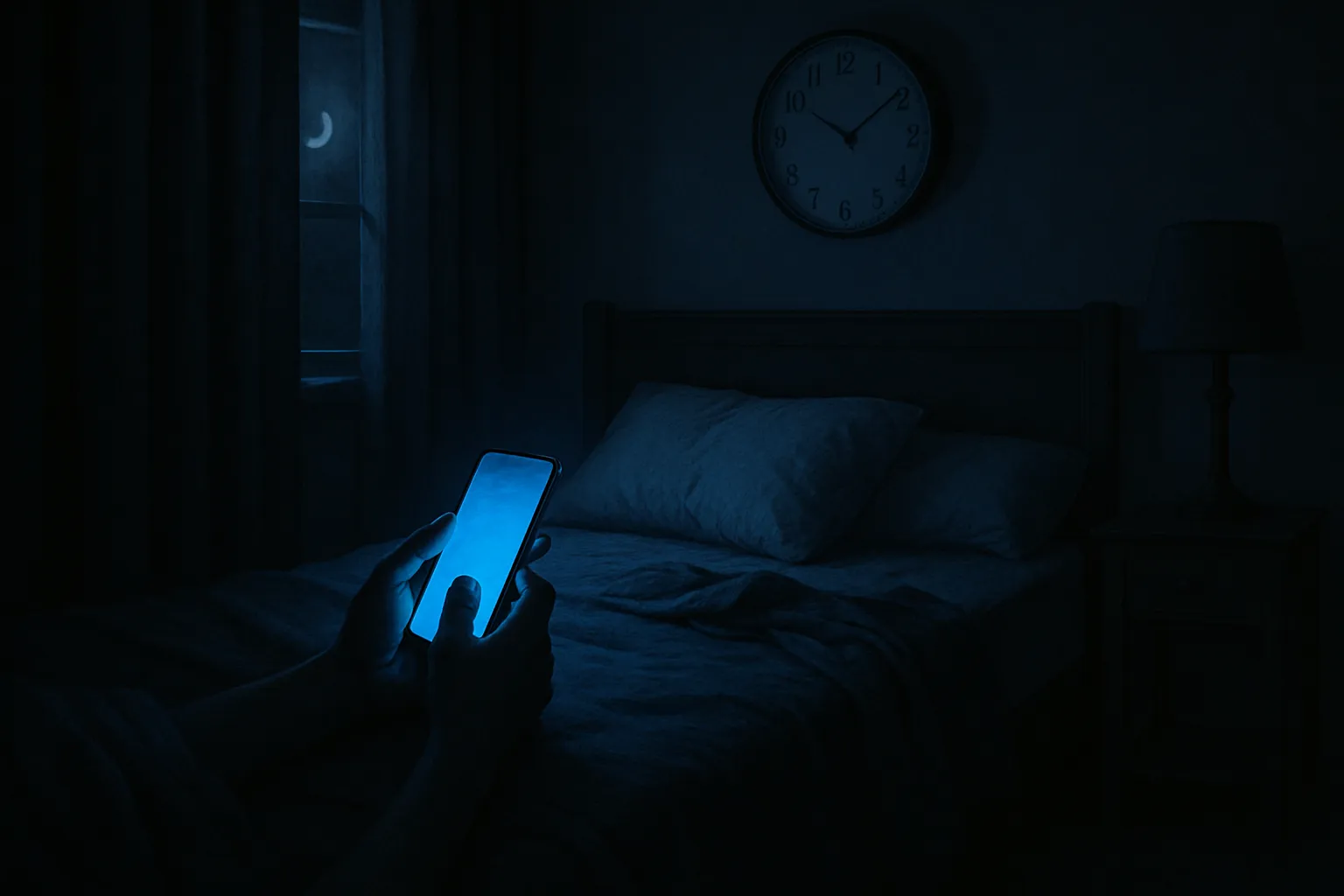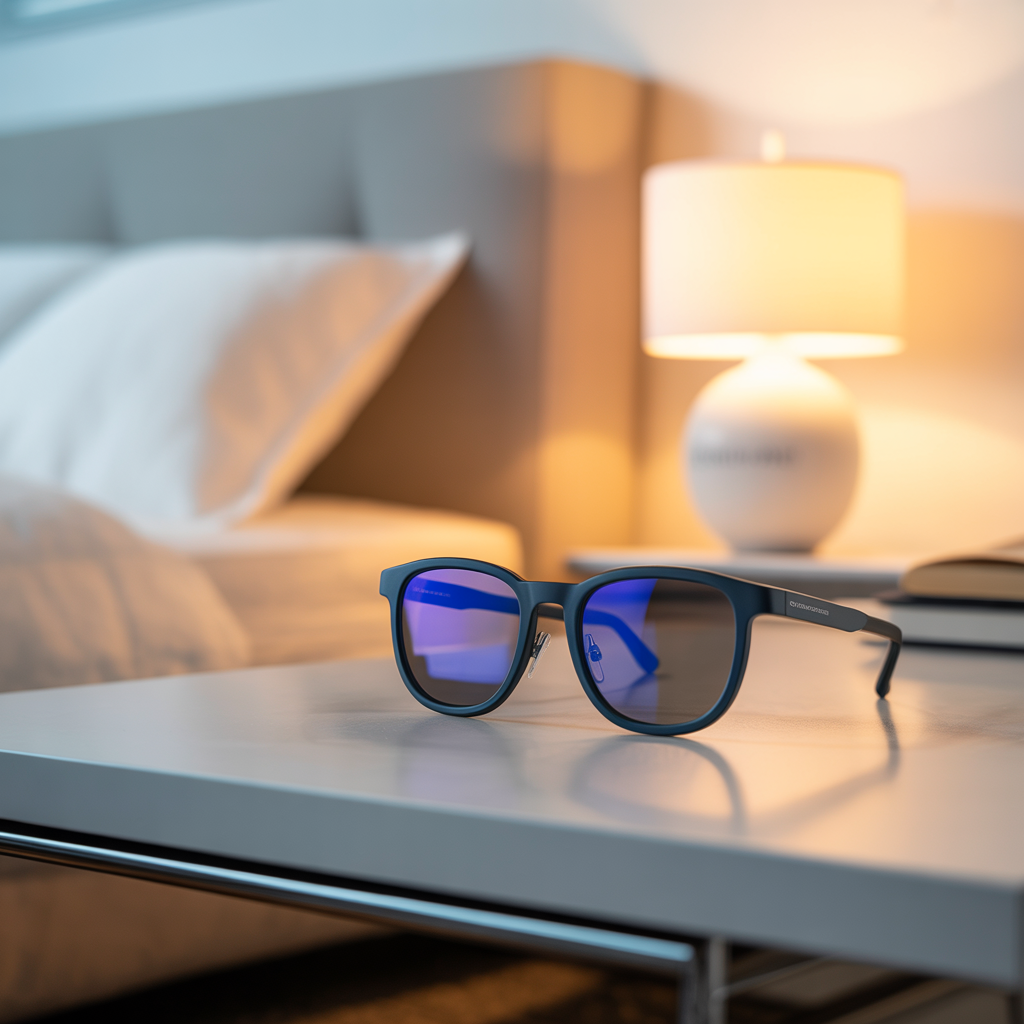
Confession time: I never believed a humble pair of glasses could stand between me and the bottomless chasm of screen-induced exhaustion. That was, until my relentless screen marathon last winter left me blinking at midnight, eyes burning and excuses piling up for yet another restless night. If your days (and way-too-many nights) are stitched together by glowing rectangles, you’ve likely felt the same—eye strain headaches, insomnia, and maybe, just maybe, a touch of 2025’s infamous ‘Zoom fatigue.’ Now, blue light blocking glasses are everywhere—from Amazon bestsellers to biohacker blogs. But do they really help, or is it more hype than help? Stick with me as I break down the real deal on blue light, the must-know science, and the practical ways these glasses are changing the digital game for people like you and me.
- Blue Light: The Frenemy in Your Pocket and Why It Ruins Sleep (and Squash Nightmares)
- How Blue Light Blocking Glasses Became My Tiny Secret Weapon
- Tricks, Timing, and Tangents: Using Blue Light Glasses Like a Pro (or at Least Avoiding Rookie Mistakes)
- Style, Safety, and Staying Power: Picking the Right Pair (Without Regret)
- Unlikely Connections: Blue Light, 2025 Culture, and My Unexpected Road to Better Sleep
Blue Light: The Frenemy in Your Pocket and Why It Ruins Sleep (and Squash Nightmares)
I used to think my late-night screen sessions were harmless. Just catching up on work, scrolling through social media, or binge-watching shows. But then I started connecting the dots between my devices and my deteriorating sleep quality.
Here’s what I discovered: blue light operates at 400–490 nanometers, which closely mimics natural sunlight. When I’m staring at my laptop at 11 PM, my brain genuinely thinks it’s daytime. No wonder my 2 AM scrolling sessions earned me those brutal dawn wake-up calls, even when I was exhausted.
The Melatonin Massacre
The real culprit behind my sleep struggles wasn’t just the blue light itself—it was what it did to my melatonin production. Research shows that blue light exposure at night delays sleep onset by suppressing melatonin production, and I was experiencing the full spectrum of symptoms: headaches, blurry vision, and that persistent fatigue that no amount of coffee could fix.
Melatonin is essentially your body’s natural “go to sleep” signal. When blue light from screens suppresses this hormone, you’re left with more than just tossing and turning. I started experiencing crankiness, headaches, and what I can only describe as a weird digital haze that followed me throughout the day.
“Staring at your screen past dark is like moving your brain’s time zone—no wonder your body rebels.” — Dr. Sophia Lin
Digital Eye Strain: The New Normal
The digital eye strain symptoms became my constant companions. Blurry vision after long work sessions, dry eyes that felt scratchy, and headaches that seemed to intensify with every Zoom call. The 2025 remote work era has made these symptoms incredibly common, and I wasn’t alone in this struggle.
What’s particularly frustrating is that prolonged screen time reduces our natural blinking rate, which exacerbates eye discomfort. The intensity of blue light from screens often increases at night due to device settings, making evening usage especially problematic for circadian rhythm disruption.
Here’s the paradox I found most interesting: blue light can be both hero and villain. During daylight hours, it’s actually beneficial for maintaining focus and alertness. But when that same light hits your retinas after sunset, it becomes a notorious sleep saboteur, tricking your brain into staying alert when it should be winding down.

How Blue Light Blocking Glasses Became My Tiny Secret Weapon
I’ll be honest—I was skeptical about blue light blocking glasses 2025 until my first overnight editing marathon changed everything. What started as desperate procrastination shopping turned into one of my smartest purchases. Screen fatigue? Cut in half. Those naggy headaches that used to creep in after hour six? Noticeably less aggressive.
Here’s what I learned: not all blue light blocking technology is created equal. High-quality lenses filter out the nastiest wavelengths—the ones that mess with your sleep cycle and strain your eyes. Felix Gray Sleep Glasses, for instance, filter up to 90% of blue light. Basically stealth mode for screen vampires like me.
The product differences aren’t just style points either. Those amber, yellow, and red lenses each bring their own sleep and focus benefits:
- Red/amber lenses: Perfect for nighttime use, blocking blue and green light for better melatonin production
- Yellow lenses: Ideal for marathon workdays, reducing eye strain without color distortion
- Clear lenses: Subtle filtering for all-day wear without looking like safety goggles
Research shows that high-performance lenses filter varied blue light percentages for customized use, whether you’re gaming late, studying for exams, or grinding through remote work deadlines.
What surprised me most? The coatings actually matter. Anti-glare and scratch-resistant features aren’t just marketing sparkle—they’re life-savers. My old glasses reflected every light source in the room. These new ones with proper coating? Clean, crisp vision without the disco ball effect.
“Blue light glasses have transformed my work-from-home experience; the difference in comfort is night and day.” — Jamie Tran
I never thought “fashion-forward” could describe computer glasses, but brands like TIJN and Cyxus proved me wrong. The 2025 market has exploded with affordable blue light glasses that don’t scream “tech nerd.” Even prescription blue light glasses options have improved dramatically.
The price range in 2025 spans $30–$150, making quality protection accessible whether you’re a budget-conscious student or a professional investing in long-term eye health. Popular brands like GUNNAR, J+S Vision, and BLUblox each offer unique advantages for different lifestyles—gamers, remote workers, and shift workers all have tailored options now.

Tricks, Timing, and Tangents: Using Blue Light Glasses Like a Pro (or at Least Avoiding Rookie Mistakes)
If you only remember one thing from this entire journey: wear lighter lenses by day, deeper tints after sunset. Your circadian rhythm will thank you. Research shows that color selection and timing of blue light glasses use optimize sleep and maximize reduction in digital eye strain and headaches.
Gamers and coders—trust me, amber-tinted glasses are MVP for marathon sessions. Screen glare drops dramatically, focus goes up. I’ve watched friends power through 12-hour coding sprints with these blue light glasses for gamers, and the difference is night and day. No more squinting at monitors or rubbing tired eyes every hour.
Night-owls (guilty, again): red or orange lenses after sunset become a secret weapon for restoring healthy sleep patterns. Think of them as tiny shields for your brain’s ‘sleep’ button. Studies indicate that nighttime lenses work best when used 2 hours before intended sleep, particularly beneficial for blue light glasses for night shift workers and students pulling all-nighters.
The Movie Theater Test
Wild card story: I once wore red-tinted glasses to a late-night movie to test their power. Results? Friends laughed at my “grandpa glasses,” but my eyelids were the only ones wide open on the car ride home. Everyone else was fighting sleep, but my melatonin stayed perfectly balanced.
Beyond the Glasses
If your job means 6+ hours of daily screen time—which is common for professionals, students, and gamers in 2025—don’t just invest in eye strain relief products. Mix in intentional screen breaks and eye exercises to level up relief. The 20-20-20 rule pairs beautifully with quality eyewear.
Choose frames that fit your face and personality. If you love how they look, you’ll actually wear them. I’ve seen too many expensive glasses collecting dust because people felt self-conscious wearing them.
“It’s not about banning screens—it’s about using them mindfully, in sync with your body’s natural timer.” — Dr. Ethan Clark
Blue light glasses for students benefit from clear or yellow lenses during study sessions, switching to amber or red for late-night cramming. The key is consistency—make it a habit like brushing your teeth, and your eyes (and sleep quality) will gradually improve sleep quality over time.

Style, Safety, and Staying Power: Picking the Right Pair (Without Regret)
After wearing cheap plastic frames that left permanent nose indents, I learned the hard way that material matters. Polycarbonate and TR90 frames have become the gold standard for blue light glasses benefits 2025 – they’re virtually weightless and flexible enough to survive daily abuse.
I can’t stress this enough: anti-glare glasses need proper coatings. Anti-scratch and anti-glare treatments aren’t just upsells – they’re essential for long-term value. Those invisible scratches that suddenly appear? They’re more annoying than the original eye strain. Research shows that certification, comfort, and style are just as vital as lens technology for sustained use and visual well-being.
Safety Standards That Actually Matter
Look for FDA or CE certification when shopping for glasses to protect eyes from screen time. Light transmission ratings range from 30% to 90% depending on the brand and lens type. This isn’t just technical jargon – it determines how much blue light actually gets filtered.
Here’s something fascinating: brands now color-code their lenses for different times of day. Yellow tints for daytime work, amber for evening sessions, and deep red for pre-sleep use. It’s turned lens swapping into part of my sleep ritual.
The Style Factor Nobody Talks About
Don’t underestimate aesthetics. Confidence in your look really can be half the battle with consistent wear. My most fashion-obsessed friend now rocks blue light glasses for content creators 24/7 – and does it with complete confidence.
“When my glasses fit right and look sharp, I forget they’re even there—and that’s the goal.” — Riley Ortiz
The 2025 market offers an incredible range – from budget-friendly options to premium customizable frames. Modern designs blend fashion trends with functional innovation. Frame shapes now complement face types while delivering serious eye protection.
Features Worth Paying For
- Polycarbonate or TR90 materials for all-day comfort
- Anti-glare and anti-scratch coatings for durability
- FDA/CE safety certifications for peace of mind
- Proper light transmission ratings for your specific needs
The wide price spectrum means there’s something for everyone, with customization and prescription options increasing each year. Whether you’re streaming, coding, or creating content, the right pair should feel invisible while doing heavy lifting for your visual health.
Unlikely Connections: Blue Light, 2025 Culture, and My Unexpected Road to Better Sleep
Something shifted in 2025 that I never saw coming. Tech wellness became the new status symbol. Suddenly, I’m watching content creators unbox their blue light glasses for remote workers like they’re reviewing the latest gaming gear. High-profile streamers treat them as essential equipment, not just health accessories. It’s wild how normalized this became.
I used to scoff at the whole concept. Honestly? I thought it was just another wellness trend that would fade. But connecting with online biohacker communities opened my eyes to something bigger. These weren’t just glasses—they were tools to improve sleep quality and transform entire routines. Research shows that sleep improvement is cited as a top outcome among digital workers adopting blue light glasses, and I started understanding why.
The community aspect changed everything for me. Seeing real people share their experiences with better focus, mood, and motivation made me curious. Sleep wasn’t just recovery anymore—it became the foundation for everything else. As Alex Summers puts it perfectly:
“Sleep is the new flex—rested minds do more, create more, and live more.”
If you’d told me in 2018 I’d be excited about picking out glasses specifically for bedtime, I would have laughed. Now? It’s a nightly ritual I can’t imagine living without. The way these glasses filter harmful artificial light has become as automatic as brushing my teeth. There’s something satisfying about that intentional transition from day mode to sleep mode.
But here’s the kicker—my mom, probably the least tech-savvy person I know, swears by her low-tint pair for Zoom marathons. She even matches them to her sweaters! When someone who still asks me to “fix the WiFi” embraces digital wellness gear, you know it’s gone mainstream.
What strikes me most is how this reflects broader cultural shifts. Digital wellness products aren’t niche anymore—they’re customizable lifestyle enablers. The proliferation of biohacking communities between 2020-2025 created this perfect storm where personal health meets digital optimization. Supporting your circadian rhythm isn’t just smart; it’s socially conscious.
This journey from skepticism to ritual taught me something valuable. Sometimes the most unexpected connections—between technology, wellness, and community—lead to the most meaningful changes. Who knew that better sleep would become my gateway to understanding how culture shapes our health choices?
TL;DR: —Blue light blocking glasses aren’t just a 2025 trend; for digital warriors, they’re legit game-changers. They ease the sting of screens, protect sleep cycles, and make a visible difference to comfort and focus. If you work, play, or study by the glow of a device (and who doesn’t?), adding a pair to your routine is a smart—and surprisingly stylish—wellness upgrade.


